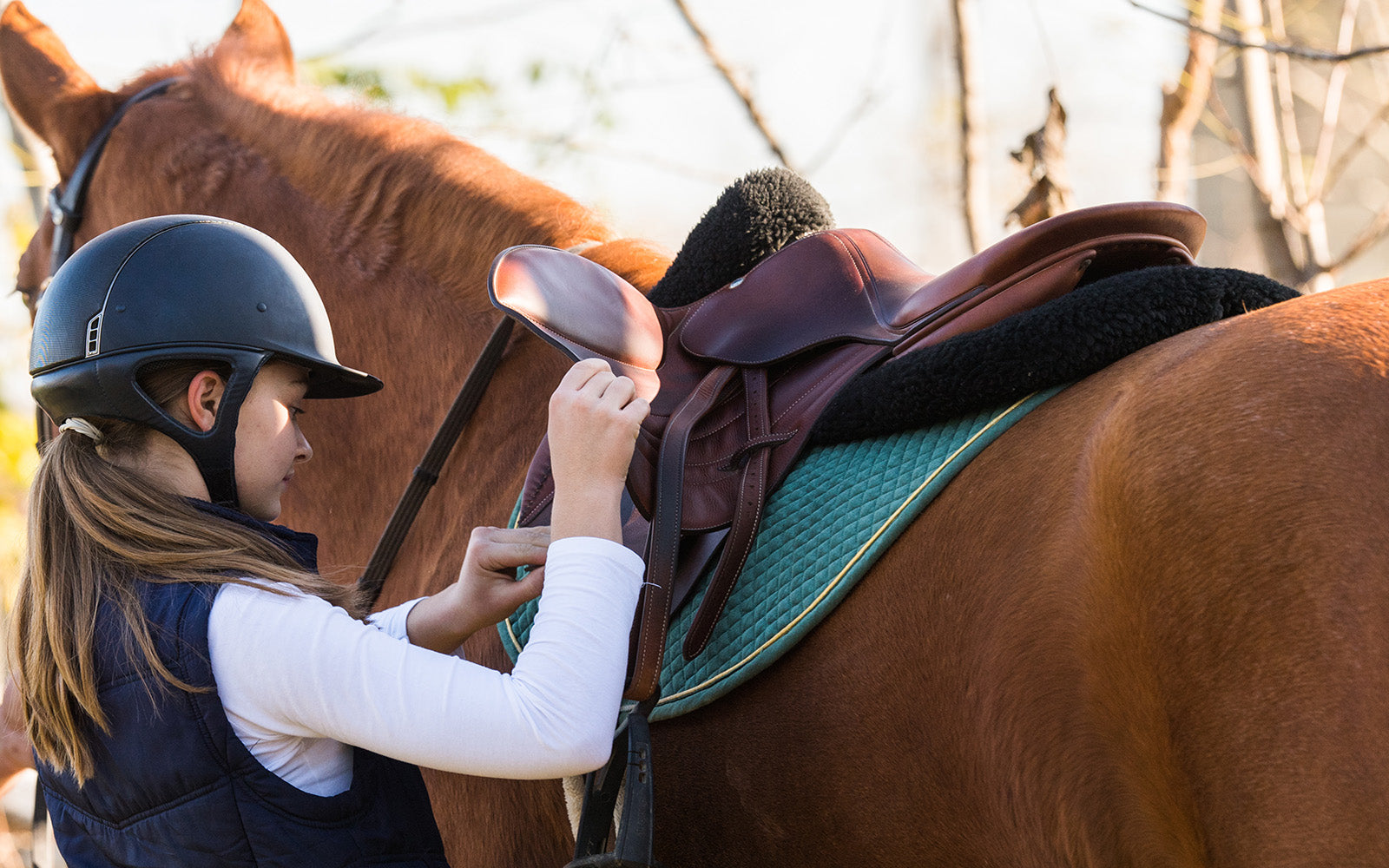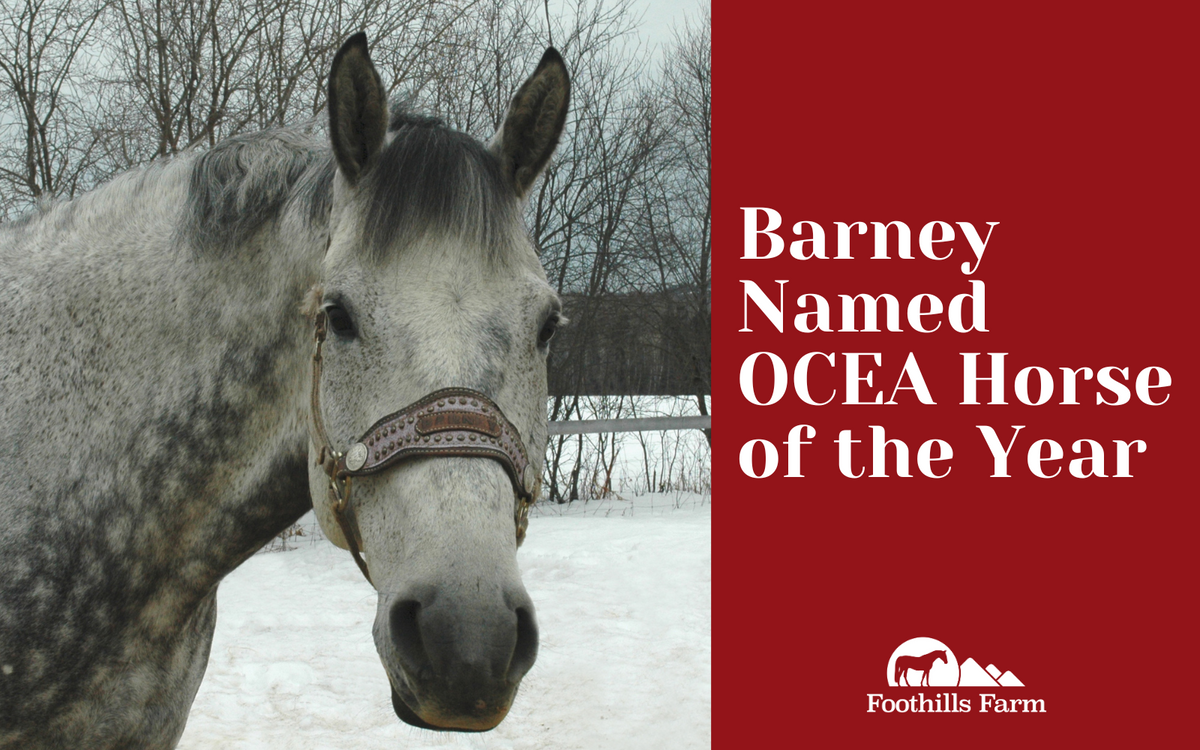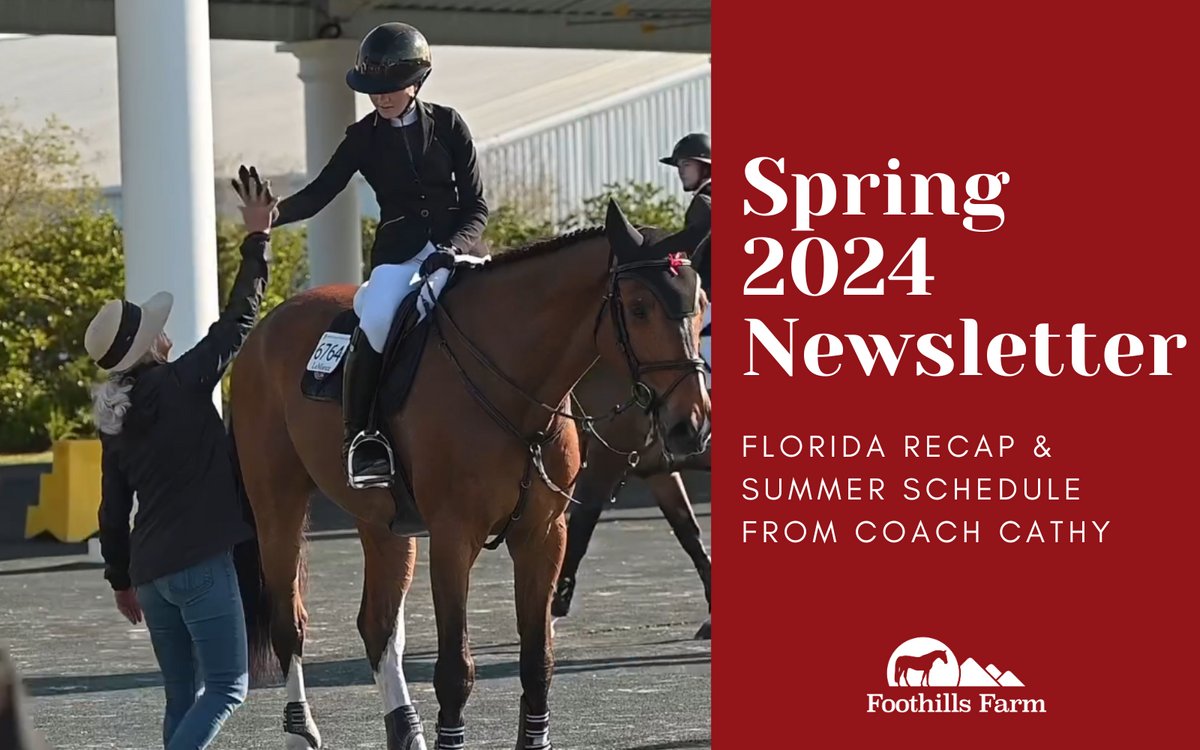What to Expect at Your First Riding Lesson

The Foothills Farm Horseback Riding Lesson Team has prepared this guide to help new riders prepare for their first riding lesson. By the second to third month of horseback riding lessons, student riders should be able to handle, groom and tack-up their horses independently.
A Note for Parents
Learning about horses can be as rewarding for you as it is for your child. Getting to know your way around these beautiful animals is a great way to unwind and improve mental health and wellbeing - you’ll see what we mean when you get here. Even if the riding lessons aren’t officially booked for you, we welcome and invite all parents and caretakers to dive into the experience. If you have allergies or are fearful around the horses, please let a member of our riding lesson team know.
Arrival
Upon arriving at the farm, if it is your first time, a member of our team will be there to show you around and teach you how to get your horse ready for the lesson. Foothills Farm is a very friendly place, with lots of friendly people, so never hesitate to ask a fellow rider or parent for information if you have a question and you don’t see a staff member around.
Before starting to work with the horse make sure you are wearing proper footwear (paddock boots, blundstones, or rubber boots) and your helmet. Foothills Farm has a number of ASTM/SEI helmets available for your use, they are located in the School Tack Room. Have the appropriate gear can make a big difference. Greenhawk Sudbury has an excellent selection of horseback riding equipment. Ask them about their discounted “Learn-to-Ride” package and be sure to share that you will be taking lessons at Foothills and they will make sure you are provided with the right type of equipment for Equestrian riding lessons.
First order of business will be finding the horse you will be riding. A member of the team will let you know what horse you are riding that day. The horse will either be located in its stall, or will be enjoying some time outside with its friends (turned out). If your horse is on turn-out, then a member of the staff will be happy to help bring the horse in from the field. Any horse brought in from turnout should be put in its stall for a drink and bio break (approximately 3- 5 minutes) before taking him back out to groom. A halter and lead-rope should be used every time you are moving a horse to and from its stall.
Preparing for Your Ride
Once you have your horse in the cross-ties, the first step will be to groom your horse.
Picking out their hooves - this is the most important and first step in the grooming process. The reason hoof picking should happen at the beginning of a grooming session is to ensure early on that your horse has not lost a shoe. Some horses do not need shoes, but if a horse wears shoes and has a missing or loose shoe, then your horse will need the attention of a Farrier before proceeding with the riding lesson. In the event that your horse has lost a shoe, please inform your instructor, another horse will be provided to you for your lesson.

Tacking Up
The process of getting your horse’s equipment (bridle, saddle, girth etc) on for riding is referred to as getting “tacked up.”
Most horses have their own bridle and their own halter. Horses can share different saddles and girths. Unless you have your own saddle, you will use one of the saddles provided from our School Tack Room. You should select a saddle that will fit you well (appropriate size of seat, flaps and stirrup length), a member of our team will help you find a good one to start with. In the beginning it might be a good idea to try different saddles from one lesson to the next to find the one that fits you best. Once you find the one you like, pay attention to which saddle it is (name plate or other distinguishing factors) so you can select it again the next time you ride.
The order in which you tack up is very important and follows a logical flow. Here is a basic order for tacking up your horse:
- Saddle Pad (should be clean and dry)
- Saddle
- Martingale (if needed)
- Girth
- Bridle
Once you have your horse tacked up, please hang their bridle up on a hook (rather than leaving it hanging from the crossties as other people or horses passing by could get caught up). You will then lead your horse to the ring. We always lead our horses from the left side (meaning the horse is on our right), making sure that we have taken the reins from over their head and are holding them properly without any leather hanging down where the horse could step on it.
Ready to Ride
Before you get on your horse, we always take a few moments to tighten the girth and determine an approximate length for our stirrups. The stirrups can be adjusted while on the horse's back, however it is much easier and safer to establish an appropriate length prior to getting on.
Before getting on, you can determine an approximate length for your stirrup by placing your finger tips at the stirrup bars (the little metal claps up on the saddle where the stirrup leather attaches to the saddle) and pulling the stirrup straight down to your armpit (keeping your arm straight). The bottom of the stirrup pad should just reach your armpit. This will give you a stirrup length that is CLOSE to the length you will need for riding. Before getting on, eye up your stirrups to make sure they are level with one another. Once you are on the horse, remove your feet from the stirrups and let your legs relax down against the horse’s side, the stirrup footpad should line up just below your ankle bone (the pointy bone on the inside of your ankle). Many riders adjust their stirrups mid-ride, riding with a longer length for flatwork, and shortening their stirrups for jumping. A typical jumping stirrup length would be short enough that the pad of the stirrup measured just above the point of the ankle.
Once we have checked that the girth is tight and the stirrups are approximately the right length, you are ready to get on. We always use a mounting block to get on our horses, we never mount from the ground as it can be hard on the horse’s back. A member of our team will always be able to help you mount your horse in the beginning. As you progress, you will learn how to do this on your own, always taking care to make sure your girth is tight and you are holding both reins before getting on.
After your Ride
Once you have completed your first riding lesson, you will lead your horse back into the barn to untack. We always “run-up” our stirrups prior to walking through any doorways or into the barn. This is a very important safety step and a member of our team will demonstrate how to run-up your stirrups. Once you arrive back at your cross-ties in the hallway, you will start by removing the bridle and putting the horses’ halter on.
The bit (the metal piece that goes in the horse’s mouth) must ALWAYS be rinsed off after every ride to remove any hay or foreign material.
After your horse is in the crossties wearing its halter, you can remove the girth and saddle. We always make sure to never place tack and equipment on the ground.
Once you have removed your horses’ tack, the grooming process starts again. We pick out their feet to ensure they haven’t picked up a rock or lost a shoe during the ride. Even though grooming takes place before and after a ride, grooming sessions following exercise are often more effective at bringing out the shine in the horse’s coat so these grooming sessions tend to be a little bit longer.
Horses love the grooming process and you will often see your efforts rewarded by your new equine friend through a big stretch, leaning into your brush, or a yawn. Horse’s do not yawn for the same reasons humans do. For horses it is called a “release” and is often a very positive sign that stress and tension is leaving their body
Once you are finished grooming, you are ready to lead the horse back into the stall. Please remember that we always use a lead rope when leading a horse (never only the halter) and ensure that the stall door is opened all the way with the latch completely clear of the opening. Once in the stall, your horse’s halter can be removed and hung on the door.
Prior to leaving the farm, please do a quick check to make sure your tack and grooming supplies have been returned to the School Tack Room. We also sweep up the area in the hallway we were working in making sure that any bio-material (road apples) left by our equine partners has been picked up and placed in a “skip”. Regular dirt (for example from picking their feet) can be swept into the nearest stall. If you notice that your grooming session resulted in a lot of shedding, then we also place the hair into the skip rather than sweeping it into the stall where a horse can eat it.
Congratulations! First lesson down! We hope that this guide will help you navigate your journey with horses and set you up for success in this amazing sport.
Contact Foothills Farm Today!
Also in Blog

Barney Named North Zone Horse of the Year by OCEA
Foothills Farm is thrilled to announce that Barney has been named the North Zone Horse of the Year at the Ontario Collegiate Equestrian Association (OCEA) Year-End Banquet!





